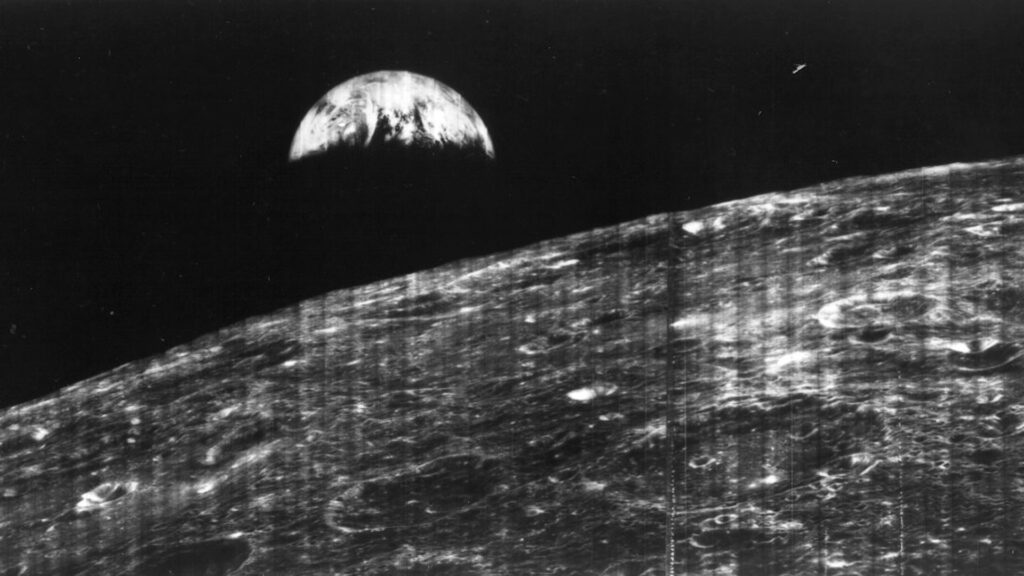
On August 23, 1966, humanity received its first glimpse of Earth from the moon, captured by NASA’s Lunar Orbiter 1. This historic photograph, taken from lunar orbit approximately 239,000 miles from Earth, presented our planet as a crescent rising above the moon’s horizon. This unplanned image marked a significant milestone in space exploration.
The photograph was transmitted to a tracking station at Robledo De Chavela near Madrid, Spain. Despite its grainy, black-and-white quality, the image was groundbreaking, offering a perspective of Earth that had never been seen before. The image was shared with the world on August 23, 2025, commemorating its 59th anniversary.
The Mission Behind the Image
Launched on August 10, 1966, Lunar Orbiter 1 was the first U.S. spacecraft to orbit the moon. It was propelled by an Atlas-Agena D rocket from Cape Canaveral, Florida, and entered lunar orbit four days later. The mission’s primary objective was to photograph potential landing sites for NASA’s upcoming Surveyor and Apollo missions.
The spacecraft’s camera system, developed by Eastman Kodak, was advanced for its time. It featured an automated mechanism that developed exposed film, scanned the images, and transmitted them back to Earth. Originally designed by the National Reconnaissance Office, the camera had been used on Cold War-era Samos spy satellites.
Lunar Orbiter 1 orbited the moon for 76 days until it was deliberately crashed into the lunar surface on October 29, 1966.
Technical Achievements and Historical Context
Despite the limited resolution of its camera, Lunar Orbiter 1 provided more detailed views from lunar orbit than were possible from Earth through even the largest telescopes of the era. The spacecraft successfully captured photographs of nine potential Apollo landing sites and seven backup locations.
The iconic image of Earth as a crescent was taken on August 23, 1966, at 16:35 GMT, during the spacecraft’s 16th orbit. This occurred just before the spacecraft moved into the darkness of the moon’s far side. The photograph was a precursor to the famous “Earthrise” image taken by Apollo 8 astronaut Bill Anders on Christmas Eve, 1968.
Over two years later, Bill Anders captured the “Earthrise” photo, a higher-resolution color image that became a cultural milestone.
The Legacy of Lunar Orbiter 1
The “Earthrise” photo taken by Apollo 8 is often credited with capturing the world’s imagination and highlighting the fragility of our planet. However, it was Lunar Orbiter 1’s earlier image that first provided a technical view of Earth from the moon, paving the way for future lunar explorations and the eventual Apollo landings.
As we reflect on this historic image, it serves as a reminder of the progress made in space exploration and the enduring curiosity that drives humanity to explore beyond our earthly confines. The photograph remains a testament to the ingenuity and vision of those early space missions.
With the 59th anniversary of the original “Earthrise” image, the world continues to look back at this moment with awe and appreciation, understanding its role in shaping our view of Earth and our place in the universe.







